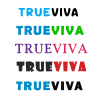Switching from Job to Freelancing: A Roadmap
Transitioning from a full-time job to freelancing is a major career shift that offers freedom, flexibility, and income potential, but also requires careful planning and preparation. Many professionals dream of leaving the traditional 9-to-5 structure to become independent freelancers, yet the transition can be challenging without a clear roadmap.
For aspiring freelancers, understanding the steps involved in making this transition ensures a smoother experience, reduces risk, and increases the likelihood of long-term success. This guide outlines a practical roadmap to help professionals leave their jobs and establish a thriving freelance career while maintaining financial stability and building a professional reputation.
Long Description
1. Assess Your Readiness for Freelancing
Before quitting a full-time job, evaluate your readiness for freelancing. Consider:
Financial Stability: Have at least 3–6 months of savings to cover initial expenses.
Skills and Expertise: Ensure your skills are marketable and in demand.
Self-Motivation: Freelancing requires discipline and the ability to manage your own schedule.
Risk Tolerance: Be prepared for inconsistent income in the early stages.
Support System: Family or mentors who can provide guidance and encouragement.
This assessment helps you determine if freelancing is a viable option at the moment or if you need more preparation.
2. Identify Your Freelance Niche
A well-defined niche is crucial for attracting clients and standing out from competitors. Popular freelance niches include:
Web and mobile app development
UI/UX design
Content writing and copywriting
Digital marketing and SEO
Data analysis and machine learning
API development and software integration
Identify your strengths, experience, and areas with high demand to choose a niche that maximizes your earning potential.
3. Build a Freelance Portfolio
A professional portfolio demonstrates your skills and builds trust with clients. Include:
Completed projects with detailed descriptions and technologies used
Links to live applications, websites, or GitHub repositories
Testimonials from previous clients or colleagues
Case studies highlighting your problem-solving abilities
Freelancers with strong portfolios attract higher-paying clients and more consistent work.
4. Set Up Your Freelance Business
Transitioning from a job to freelancing requires treating it as a business. Key steps include:
Business Structure: Decide whether to operate as a sole proprietor, LLC, or other legal entity.
Banking and Finances: Open a dedicated account for freelance income and track expenses.
Pricing Strategy: Research industry rates, set fair prices, and consider hourly vs. project-based fees.
Contracts: Use professional contracts to define scope, deadlines, payment terms, and deliverables.
Setting up your freelance business properly reduces risks and ensures professionalism.
5. Start Freelancing While Employed
Many professionals begin freelancing before leaving their job to reduce financial risk. Benefits include:
Gaining real-world freelance experience
Building client relationships and a portfolio
Testing your niche for demand and profitability
Adjusting pricing and workflow based on initial projects
This approach allows for a smoother transition and reduces stress associated with leaving a stable job.
6. Marketing Yourself as a Freelancer
Marketing is essential for building a client base. Effective strategies include:
Online Presence: Create a website or portfolio to showcase services.
Freelance Platforms: Join Upwork, Fiverr, Freelancer, or Toptal to find clients.
Social Media: Use LinkedIn, Twitter, and relevant forums to network and share expertise.
Referrals: Ask previous colleagues or clients for recommendations.
Content Marketing: Share blogs, tutorials, or case studies to establish authority.
A strong marketing plan ensures consistent leads and visibility in a competitive market.
7. Manage Freelance Projects Effectively
Freelancers must handle project management, communication, and deadlines independently. Tips include:
Use Tools: Trello, Asana, Jira, or Monday.com for tracking tasks and milestones.
Time Management: Use time tracking tools like Toggl or Harvest.
Client Communication: Maintain regular updates and document project requirements.
Deliver Quality Work: Meet deadlines and exceed expectations to earn repeat clients.
Effective project management distinguishes successful freelancers from amateurs.
8. Financial Management for Freelancers
Income can be unpredictable in the early stages. Best practices include:
Budgeting: Track personal and business expenses carefully.
Emergency Fund: Maintain at least 3–6 months of living expenses.
Invoicing and Payments: Use professional invoicing tools to ensure timely payment.
Taxes: Understand local tax obligations for freelancers and keep accurate records.
Diversifying Income: Offer multiple services or retainers to stabilize revenue.
Strong financial management ensures sustainability and reduces stress.
9. Scaling Your Freelance Career
Once established, freelancers can scale their careers by:
Specializing Further: Focus on high-demand technologies or industries.
Raising Rates: Increase rates as your experience and portfolio grow.
Outsourcing or Collaboration: Partner with other freelancers for larger projects.
Long-Term Clients: Secure ongoing contracts for recurring revenue.
Continuous Learning: Stay updated with trends, tools, and best practices.
Scaling allows freelancers to earn more while optimizing workload and work-life balance.
10. Overcoming Challenges
Common challenges for freelancers transitioning from jobs include:
Inconsistent Work: Plan finances and maintain client pipelines.
Loneliness: Join online communities or coworking spaces.
Client Negotiations: Practice clear communication and contract management.
Skill Gaps: Dedicate time to learning and certifications.
By anticipating challenges, freelancers can navigate the transition more effectively.
Conclusion
Switching from a job to freelancing is a rewarding career move that offers freedom, flexibility, and potential for growth. Success depends on careful planning, building a portfolio, marketing services effectively, and managing finances wisely.
Freelancers who approach this transition strategically—starting with part-time projects, defining a niche, and scaling gradually—can achieve a sustainable, long-term career while delivering high-quality solutions to clients. With dedication, continuous learning, and professional discipline, transitioning to freelancing can become a fulfilling and profitable journey.


 by Emily
by Emily




